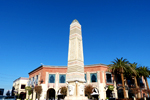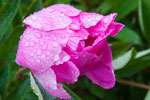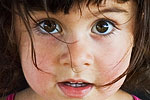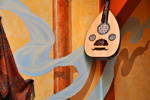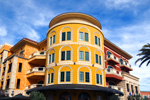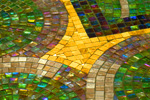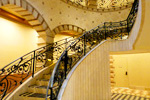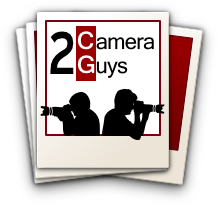Nokia 808 PureView Smartphone Review
Earlier this year, Nokia stunned the smartphone world when they announced their 808 PureView model - not because of its phone technology, but for the camera that the Nokia designers integrated into the handset.
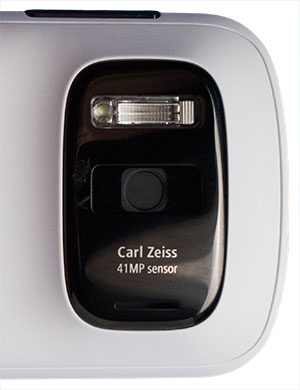
While most phone cameras peak at about 8 megapixels, the sensor in the 808 PureView weighs in at 41 megapixels (with a maximum resolution of 38MP).
The Nokia 808 PureView smartphone reminds me of one of those concept cars that manufacturers roll out at auto shows. You know, the ones with gull wing doors that get 60 miles per gallon and can drive themselves.
Of course, if those cars ever make it into production, it will be in the year 2025. In contrast, the 808 PureView, which was on the drawing board for five years, is available now (in the U.S., an unlocked version costs about $600).
A common reaction when Nokia first introduced the 808 was why would you ever need that many megapixels on a cellphone?
Putting aside all the hubbub about 41 megapixels, the more important question is simply, how good is the camera in the 808? The short answer is that the image quality is very good and the detail is excellent.
Currently, the camera in the Nokia 808 is the best available in any smartphone on the market.
The camera is so good, you might think of the 808 as a camera with a phone attached to it. Indeed, a few pundits have suggested that Nokia should have just released the PureView technology as a standalone camera.
And since we are a camera review site, this article will focus on the camera portion of the Nokia 808. But the phone element is part of the package and will be discussed later.
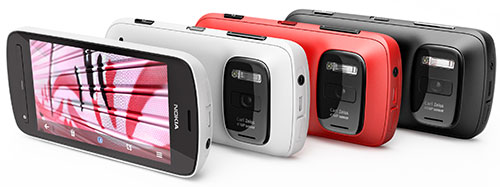
What's Hot about the Nokia 808 PureView
- 41MP CMOS 1/1.2" sensor
- Carl Zeiss Tessar lens
- Bright, 4" AMOLED display
- Very good detail and image quality
- Touch sensitive screen including touch auto focus
- Built-in Xenon flash
- 1080p video at 30 fps also 720p and 360p
- Integrated stereo microphones
- microSDHC Card compatible for up to 32GB of expanded storage
- GPS tagging
What's Not So Caliente about the Nokia 808 PureView
- Noticeable highlight clipping even in medium to high contrast shots
- Low resolution, 640 x 360 pixel screen
- Long lag time between shots when shooting highest resolution
- Image stabilization only in Video mode
- No RAW capture
- No shutter speed controls
Design
Judging the design of the Nokia 808 PureView is a matter of perspective. Looking at it from a camera angle, first and foremost, Nokia has pole vaulted over the competition with its 41 megapixel sensor.
Not only does it make all those 8 megapixel sensors seem like toys, but the Nokia designers also decided to use a larger sensor, (as measured in area), than other smartphone cameras.
(As a reminder, a sensor is measured in two ways. First, how many megapixels or photosites it contains and second, it's physical dimensions as stated in width x length = area.)
The 808's CMOS sensor is 1/1.2", (10.82 x 7.52mm or 81.216 square mm.), or about 70% the size of the sensor in the mirrorless Nikon V1 and twice as large as the highly rated Canon S100 pocket camera.
When side by side with the iPhone 4S, the Apple sensor (4.54×3.42 mm or 15.5268 square mm.) is dwarfed by the more than five times larger 808 PureView.
Nokia paired this massive sensor with a top-end Carl Zeiss lens with a fixed 2.4 aperture. The combination yields highly detailed sharp images. You can capture JPEGs at full resolution of 38MP (4:3 format) of 34MP (16:9).

This commitment to the sensor and lens created repercussions in the design of the body that runs counter to the trend to sculpt smartphones as thin as a short stack of credit cards.
As you can see, the camera elements on the Nokia 808 look like a baby bump on a super model. And for those who love their phones sylph-like, that protrusion might be a major speed bump in their purchase decision.
As a camera guy, I'll opt for the sensor and lens and the bulge any day over a thinner phone with lesser technology.
The 808 is built like a tank. I saw a Nokia representative drop his phone onto a hard floor - on purpose - to prove its durability. (Kids don't try this at home with your parent's phone.)
Nokia provides a dedicated button on the side, which will turn on the camera even when the phone is off. Once in Camera mode, the button acts like a typical shutter release. Press it softly and it focuses on your subject. Push it harder to take the shot.
Above it, the Volume rocker button doubles as a Zoom button when you are shooting a video or capturing images in the 3, 5 or 8MP size. More about the zoom feature later.
You can also perform these functions on the touchscreen. Touch on the display to indicate where the camera should focus and then punch the shutter button icon to take the shot.
If zooming is an option, you can also pinch or expand on the screen to zoom in or out.
Image Quality
The Nokia designers have accomplished a technological feat in coupling this mega-megapixel sensor and Zeiss lens and shoehorning them into a smartphone body. When you look at the resulting image quality, you can see the effort was worth it.
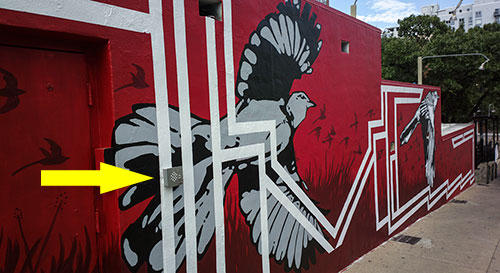
This is the original photo of a newly adorned wall. (The yellow arrow was added in Photoshop to indicate where the close-up image below was cropped from.) It was originally a 34MP, 16:9 photo (7728 x 4354 pixels) that has been resampled here to 500 pixels wide. (If you click on it, you will see it at 1200 pixels, which is still 1/6 of the original width.)
It was shot at 1/400 sec, 64 ISO. The Nokia has a fixed 8mm lens with an f/2.4 aperture.

This image on the right is a one to one pixel crop taken from the full shot above. The yellow arrow marks the spot. The detail is pretty remarkable, especially when you look at the original.
But not everyone wants or needs a 38MP image. In this case, the PureView technology enters the picture. Nokia engineers have created image processing algorithms that take the data coming from the 41 megapixels and combines it into either 3, 5 or 8 megapixel JPEGs.
You choose the size depending upon your needs. If you are emailing a friend, the 3MP shot should be just fine. If you are planning on printing an 8x10, then the 8MP image would work.
The image quality of these smaller JPEGs is very good. In fact, the 808's default size is 5MP.
Another advantage of this PureView system is that it gives you the ability to zoom when in still image mode. A weakness of smartphone cameras is that they can only digitally zoom and not optically. This is due to a number of factors including the difficulty of integrating a true zoom lens into a phone's super slim form factor.
With the Nokia 808, if you choose the 3, 5, or 8MP mode, then you can zoom in on your subject. It is still a digital zoom, but you do not incur the usual image quality loss because basically the "zoom" is simply cropping your 41MP image to a one to one pixel size, which would give you a similar result as the post-processed cropped entry lock box shot above.
Before I tumble head over heels about the Nokia 808, it simply does not have the dynamic range that you would hope for. This is most noticeable in its tendency to clip highlights even in what could be considered medium contrast lighting situations.

For example, in this shot of flowers in a shady area, the highlights are clipped where the sun catches the yellow blooms. This image has the Highlight setting reduced in Camera Raw, but it is still clipped beyond simple recovery.
You could underexpose these types of images. The Nokia 808 also provides a Bracketing feature. Ideally, you would not need to resort to these options, but in higher contrast conditions, it may be necessary.
As for video, the image quality is very good. Nokia does supply image stabilization in video mode which is helpful since hand holding a camera phone while shooting video can lead to a queasy viewing experience.
The Nokia 808 includes stereo recording, but the biggest problem with on-camera microphones is that the nearest sound source is the camera operator and any grunts or curses he or she makes are clearly captured.
Features
Except for the two buttons on the side of the phone, all the camera controls are located on the touchscreen menu where you can choose from three modes, Automatic, Scenes, and Creative.
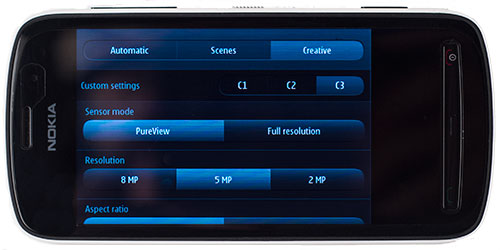
The Scene options are fairly standard, Landscape, Close-up, Portrait, etc.
When in Creative mode, you have the most control. In PureView, you can choose between 3, 5, or 8MP shots. Full resolution pumps you up to the 34 or 38MP captures.
Also, you can lock in your favorite options in one of the three Custom settings.
In addition, in Creative mode, you can pick from a list of White Balance presets and set your ISO, from 50 to 1600. Aperture is fixed at 2.4.
The big missing control is the ability to set the shutter speed. The Nokia 808 simply does not provide it and it is sorely missed when you are trying to shoot a moving subject.
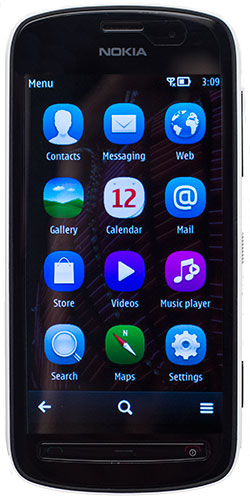
Before closing, a few words about the phone part of the Nokia 808 are in order. Without going into Nokia's financial travails, the 808 is a bit of an orphan in the storm.
The phone runs on the Symbian OS, which Nokia is replacing in its newer phones with Windows 8. I won't say that Nokia has abandoned Symbian because it still supports it. And indeed, as this article is being posted, Nokia is close to releasing an update of Symbian,(Belle FP2) for the 808.
But if you are one of those bleeding edge types, Symbian is old news and you probably wouldn't feel part of the in-crowd if you were carrying around the 808.
Then again, if you love to have the biggest and best phone camera, then the 808 will make you a proud mama or papa. If you aren't appreciated, then make sure your friends notice the "Carl Zeiss, 41MP" printed under the camera lens.
Of course, this phone doesn't offer the ten zillion apps that an iPhone does, but honestly, how many do you need?
The Nokia 808 includes the basics. The offline Maps app is a favorite especially if you are an inveterate traveler who needs occasional guidance.
And if you visit the Nokia apps store, you will find a few inexpensive photography apps that will extend the feature set of the 808.
For example, for $1.99, the Camera Lovers Pack app by Scalado supplies five camera functions including a neat Panorama utility.
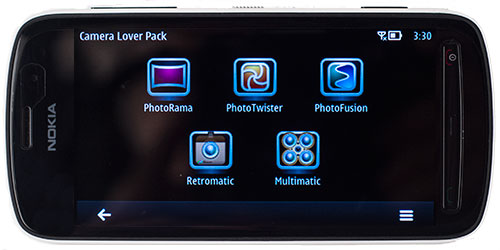
The imaging company, Scalado was acquired by Nokia in July which bodes well for the future development of the PureView technology. In fact, Nokia just announced the Lumia 920 phone with PureView running Windows 8. Though the highest resolution for this camera is 8MP.
Verdict
Despite the tendency of the camera in the Nokia 808 PureView to clip highlights, it still is the best camera currently in a smartphone. The 41MP on a comparatively huge sensor cannot be bested.
None of the wireless service providers in the United States are subsidizing the 808 like they are the iPhone. Therefore the $600 price tag might cause some sticker shock.
But as the saying goes, "the best camera is the one that you have with you." And with the Nokia 808 in your pocket, you can have a highly capable one always within reach.
